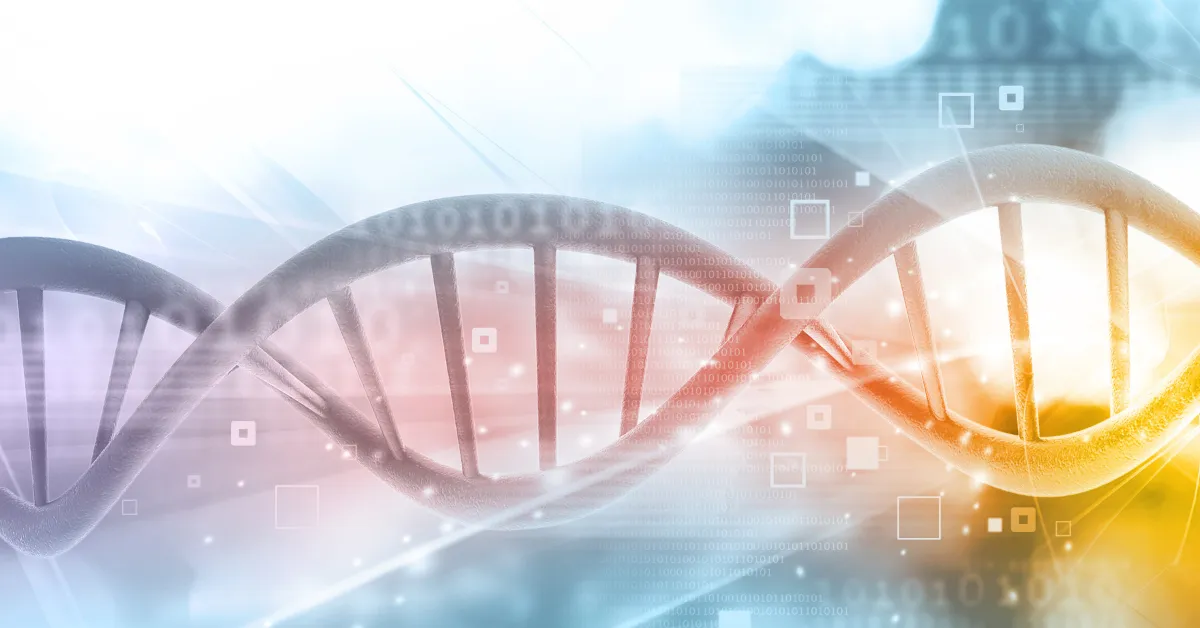Articles & Information
BLOG

Celebrating 85 years of oestradiol - Part 3
“The history of the discovery of oestrogens, the mechanisms of their synthesis, and their therapeutic applications are very important components of the fabric of endocrinology.”
Celebrating 75 years of oestradiol, Journal of Molecular Endocrinology, 2015.
Happy 85th Birthday Oestradiol - Part 3
During the early days of oestrogen research the similarity of the structure of testosterone and oestradiol led researchers to postulate the conversion of androgens to oestrogens. The year was 1937 when Steinach & Kun then tested the hypothesis that testosterone was a precursor of oestradiol.
“They originally demonstrated this conversion in male rats (Steinach & Kun 1936) and then a year later in five men (Steinach & Kun 1937). They injected men with testosterone propionate, 50 mg/injection three times per week with a total of 20 injections, and bioassayed urinary oestrogen before and after. Oestrogen levels were between 0 and 36 rat units before the injections, and after, the maximum measured was 1200 rat units (Steinach & Kun 1937). They concluded that ‘male hormone, when injected, must therefore be transformed in the body into this physiological substance, i.e., urinary oestrogen’. To our knowledge, this study provided the initial demonstration of aromatase, first in male rats and then in men.”
Seriously. 1937. 19-feckin-37!
The oestradiol discovery timeline
The extensive role of oestradiol in the physiology of humans, beyond periods and pregnancy, evolved in understanding somewhere between 1940 and the 1980s.
The recognition of estradiol's systemic role in human metabolism has been a progressive journey, with contributions from numerous researchers over the decades. The cumulative findings have established estradiol as a critical hormone influencing a wide range of metabolic processes in the human body.
By the 1950s scientists began to observe that oestrogens, including oestradiol, influenced metabolic processes beyond reproduction. Research indicated that oestradiol affected bone density, lipid metabolism, and glucose homeostasis. However, these studies often lacked comprehensive mechanistic explanations.
Advancements in the 1960s-1970s: The discovery of oestrogen receptors in various tissues during the 1960s and 1970s provided a molecular basis for understanding oestradiol's systemic effects. Researchers found that oestradiol interacted with receptors in the liver, bone, and cardiovascular system, influencing metabolic functions. Notably, the identification of estrogen receptor β (ERβ) expanded the understanding of estrogen signaling pathways.
Contemporary Understanding: Modern research has elucidated estradiol's role in regulating energy balance, adipose tissue function, and insulin sensitivity. Studies have demonstrated that estradiol contributes to the regulation of systemic energy metabolism, with adipose tissue playing a central role in this process.
I have many raging thoughts about the work done by Steinach & Kun 1937 , but for now my two main concerns with the knowledge of this information revealed in Volume 55: Issue 3 of the Journal of Molecular Endocrinology are:
They clearly demonstrated the conversion of testosterone to oestradiol in a human.
They obviously knew that both oestrogens and testosterone are in all humans.
Yet, they chose to prefix the hormones in question with a gender label.
Why did they do that? What’s the significance of saying the male and female hormones?
Why couldn’t they have just said - ‘we know that testosterone and oestradiol are important hormones in all humans, and we now know that 100% of circulating oestradiol is derived from androgens.’
Is the gender labeling of sex hormones a key factor that prevents us from learning the whole truth about sex hormones?
If we taught about sex hormones without gender labels would topics like menstruation, reproductive health, and related topics still become characterised as difficult to talk about?
Does the current school-based sex hormone misinformation and misdirection contribute to the tiny crack that eventually becomes the gender health & education gap?
If there were early interventions to realign the correct biological facts for everyone, could we start to zip-up the void before it begins?
Teaching human biology and sex hormones in gender-neutral terms aligns with scientific understanding and has the potential to reshape societal attitudes toward gender equality. By challenging misconceptions about biology, this approach can help address stereotypes that perpetuate gender disparities in health and education, ultimately contributing to narrowing the gender gap.
Hormones have no gender. Let’s start there and see what happens.
Why are we under-educating everyone? Who benefits?

Celebrating 85 years of oestradiol - Part 3
“The history of the discovery of oestrogens, the mechanisms of their synthesis, and their therapeutic applications are very important components of the fabric of endocrinology.”
Celebrating 75 years of oestradiol, Journal of Molecular Endocrinology, 2015.
Happy 85th Birthday Oestradiol - Part 3
During the early days of oestrogen research the similarity of the structure of testosterone and oestradiol led researchers to postulate the conversion of androgens to oestrogens. The year was 1937 when Steinach & Kun then tested the hypothesis that testosterone was a precursor of oestradiol.
“They originally demonstrated this conversion in male rats (Steinach & Kun 1936) and then a year later in five men (Steinach & Kun 1937). They injected men with testosterone propionate, 50 mg/injection three times per week with a total of 20 injections, and bioassayed urinary oestrogen before and after. Oestrogen levels were between 0 and 36 rat units before the injections, and after, the maximum measured was 1200 rat units (Steinach & Kun 1937). They concluded that ‘male hormone, when injected, must therefore be transformed in the body into this physiological substance, i.e., urinary oestrogen’. To our knowledge, this study provided the initial demonstration of aromatase, first in male rats and then in men.”
Seriously. 1937. 19-feckin-37!
The oestradiol discovery timeline
The extensive role of oestradiol in the physiology of humans, beyond periods and pregnancy, evolved in understanding somewhere between 1940 and the 1980s.
The recognition of estradiol's systemic role in human metabolism has been a progressive journey, with contributions from numerous researchers over the decades. The cumulative findings have established estradiol as a critical hormone influencing a wide range of metabolic processes in the human body.
By the 1950s scientists began to observe that oestrogens, including oestradiol, influenced metabolic processes beyond reproduction. Research indicated that oestradiol affected bone density, lipid metabolism, and glucose homeostasis. However, these studies often lacked comprehensive mechanistic explanations.
Advancements in the 1960s-1970s: The discovery of oestrogen receptors in various tissues during the 1960s and 1970s provided a molecular basis for understanding oestradiol's systemic effects. Researchers found that oestradiol interacted with receptors in the liver, bone, and cardiovascular system, influencing metabolic functions. Notably, the identification of estrogen receptor β (ERβ) expanded the understanding of estrogen signaling pathways.
Contemporary Understanding: Modern research has elucidated estradiol's role in regulating energy balance, adipose tissue function, and insulin sensitivity. Studies have demonstrated that estradiol contributes to the regulation of systemic energy metabolism, with adipose tissue playing a central role in this process.
I have many raging thoughts about the work done by Steinach & Kun 1937 , but for now my two main concerns with the knowledge of this information revealed in Volume 55: Issue 3 of the Journal of Molecular Endocrinology are:
They clearly demonstrated the conversion of testosterone to oestradiol in a human.
They obviously knew that both oestrogens and testosterone are in all humans.
Yet, they chose to prefix the hormones in question with a gender label.
Why did they do that? What’s the significance of saying the male and female hormones?
Why couldn’t they have just said - ‘we know that testosterone and oestradiol are important hormones in all humans, and we now know that 100% of circulating oestradiol is derived from androgens.’
Is the gender labeling of sex hormones a key factor that prevents us from learning the whole truth about sex hormones?
If we taught about sex hormones without gender labels would topics like menstruation, reproductive health, and related topics still become characterised as difficult to talk about?
Does the current school-based sex hormone misinformation and misdirection contribute to the tiny crack that eventually becomes the gender health & education gap?
If there were early interventions to realign the correct biological facts for everyone, could we start to zip-up the void before it begins?
Teaching human biology and sex hormones in gender-neutral terms aligns with scientific understanding and has the potential to reshape societal attitudes toward gender equality. By challenging misconceptions about biology, this approach can help address stereotypes that perpetuate gender disparities in health and education, ultimately contributing to narrowing the gender gap.
Hormones have no gender. Let’s start there and see what happens.
Why are we under-educating everyone? Who benefits?

Celebrating 85 years of oestradiol - Part 3
“The history of the discovery of oestrogens, the mechanisms of their synthesis, and their therapeutic applications are very important components of the fabric of endocrinology.”
Celebrating 75 years of oestradiol, Journal of Molecular Endocrinology, 2015.
Happy 85th Birthday Oestradiol - Part 3
During the early days of oestrogen research the similarity of the structure of testosterone and oestradiol led researchers to postulate the conversion of androgens to oestrogens. The year was 1937 when Steinach & Kun then tested the hypothesis that testosterone was a precursor of oestradiol.
“They originally demonstrated this conversion in male rats (Steinach & Kun 1936) and then a year later in five men (Steinach & Kun 1937). They injected men with testosterone propionate, 50 mg/injection three times per week with a total of 20 injections, and bioassayed urinary oestrogen before and after. Oestrogen levels were between 0 and 36 rat units before the injections, and after, the maximum measured was 1200 rat units (Steinach & Kun 1937). They concluded that ‘male hormone, when injected, must therefore be transformed in the body into this physiological substance, i.e., urinary oestrogen’. To our knowledge, this study provided the initial demonstration of aromatase, first in male rats and then in men.”
Seriously. 1937. 19-feckin-37!
The oestradiol discovery timeline
The extensive role of oestradiol in the physiology of humans, beyond periods and pregnancy, evolved in understanding somewhere between 1940 and the 1980s.
The recognition of estradiol's systemic role in human metabolism has been a progressive journey, with contributions from numerous researchers over the decades. The cumulative findings have established estradiol as a critical hormone influencing a wide range of metabolic processes in the human body.
By the 1950s scientists began to observe that oestrogens, including oestradiol, influenced metabolic processes beyond reproduction. Research indicated that oestradiol affected bone density, lipid metabolism, and glucose homeostasis. However, these studies often lacked comprehensive mechanistic explanations.
Advancements in the 1960s-1970s: The discovery of oestrogen receptors in various tissues during the 1960s and 1970s provided a molecular basis for understanding oestradiol's systemic effects. Researchers found that oestradiol interacted with receptors in the liver, bone, and cardiovascular system, influencing metabolic functions. Notably, the identification of estrogen receptor β (ERβ) expanded the understanding of estrogen signaling pathways.
Contemporary Understanding: Modern research has elucidated estradiol's role in regulating energy balance, adipose tissue function, and insulin sensitivity. Studies have demonstrated that estradiol contributes to the regulation of systemic energy metabolism, with adipose tissue playing a central role in this process.
I have many raging thoughts about the work done by Steinach & Kun 1937 , but for now my two main concerns with the knowledge of this information revealed in Volume 55: Issue 3 of the Journal of Molecular Endocrinology are:
They clearly demonstrated the conversion of testosterone to oestradiol in a human.
They obviously knew that both oestrogens and testosterone are in all humans.
Yet, they chose to prefix the hormones in question with a gender label.
Why did they do that? What’s the significance of saying the male and female hormones?
Why couldn’t they have just said - ‘we know that testosterone and oestradiol are important hormones in all humans, and we now know that 100% of circulating oestradiol is derived from androgens.’
Is the gender labeling of sex hormones a key factor that prevents us from learning the whole truth about sex hormones?
If we taught about sex hormones without gender labels would topics like menstruation, reproductive health, and related topics still become characterised as difficult to talk about?
Does the current school-based sex hormone misinformation and misdirection contribute to the tiny crack that eventually becomes the gender health & education gap?
If there were early interventions to realign the correct biological facts for everyone, could we start to zip-up the void before it begins?
Teaching human biology and sex hormones in gender-neutral terms aligns with scientific understanding and has the potential to reshape societal attitudes toward gender equality. By challenging misconceptions about biology, this approach can help address stereotypes that perpetuate gender disparities in health and education, ultimately contributing to narrowing the gender gap.
Hormones have no gender. Let’s start there and see what happens.
Why are we under-educating everyone? Who benefits?
a free practitioner's guide
Menstrual Health 101
Key insights
Your First Step to a Cycle-Aware Practice

Start making a real impact today.

Why You Need This Guide
Explore how hormonal rhythms influence metabolism, mood, and well-being at every life stage
Discover how small, practical shifts in your approach can enhance client outcomes, build trust, and set you apart in your field.


